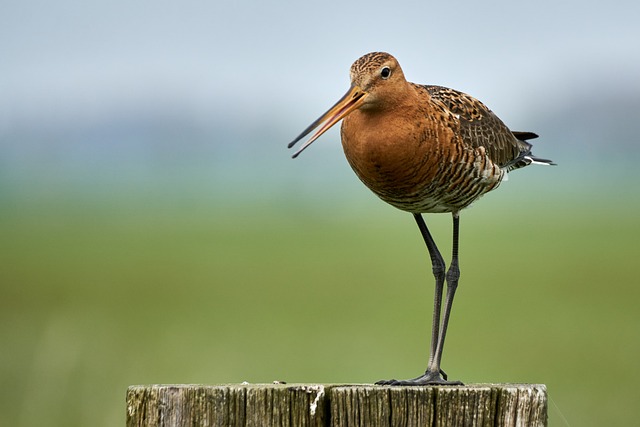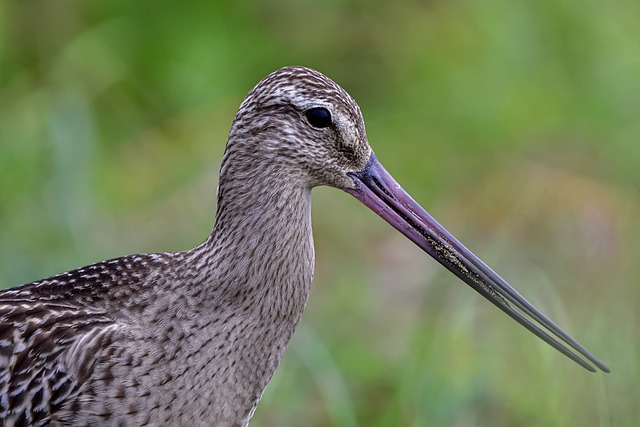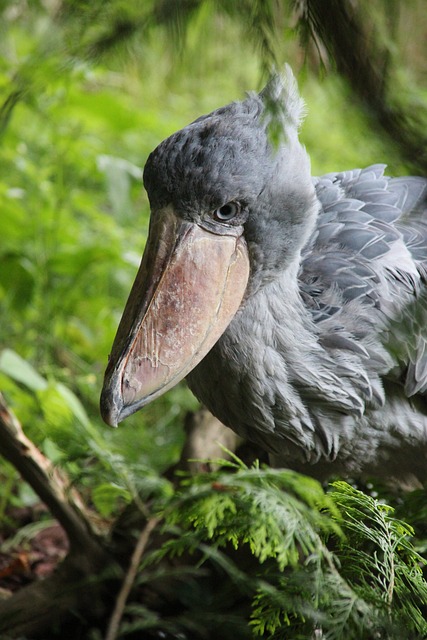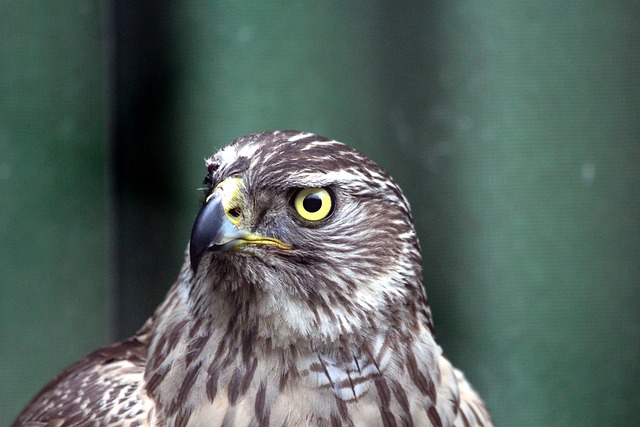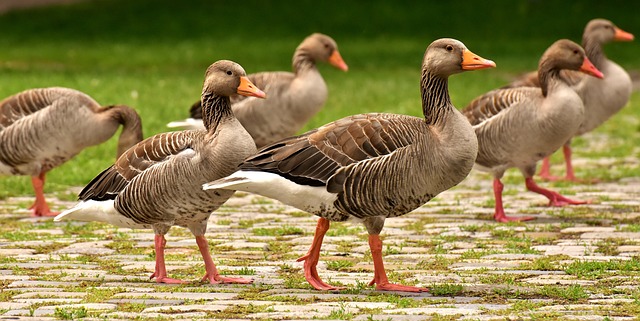The Common Shelduck is a fascinating species of duck that is native to parts of Europe and Asia. It is a medium-sized duck, with its body covered in dark chestnut-brown feathers and its wings marked with white and black.
It also has a distinctive “shelduck” call and a unique courtship display.
Introduction
The Common Shelduck is an important species to learn about for many reasons. It plays a crucial role in its local environment and its conservation status can tell us a lot about the health of wetland ecosystems. It also serves as a flagship species for wetland conservation, as its presence is a sign of a healthy environment.
The Common Shelduck’s species name is Tadorna tadorna, which is derived from the Old French word “tadorne” meaning “pied waterfowl”. It is a widely distributed species and can be found in many parts of Europe, Asia, and parts of North Africa. It also has a wide range of habitats, from coastal waters to marshlands and rivers.
The Common Shelduck has a number of unique adaptations that help it survive in its environment. Physically, it has a large body that helps it to stay afloat in the water and a bill that is designed for efficient rooting in mud. It also has strong legs and webbed feet, which help it move around in the water.
Behaviorally, the Common Shelduck is a gregarious species, forming large flocks and staying close to each other during autumn and winter. They also have a complex communication system, consisting of different calls and body postures. This helps them to communicate with each other and to keep the flock together.
The Common Shelduck is also one of the few species of waterfowl that are monogamous. This means that the birds form long-term pairs and can be seen flying together, swimming together, and even preening each other. This is an important behavior for the species, as it helps them to stay together and raise their young.
Learning about the Common Shelduck can give us a better understanding of wetland ecosystems and the importance of conserving them. It can also give us insight into the behavior of waterfowl, which can help us to better manage their populations. With this in mind, let’s take a closer look at the Common Shelduck and explore its habitat, diet, behavior, and reproduction.
Habitat and Distribution
The common shelduck is a species of large waterfowl, native to Europe, Asia, and Africa. It can be found in shallow coastal waters, estuaries, wetlands, and lake edges, where it feeds and takes shelter. The common shelduck can also be found in some parts of North America, thanks to intentional releases.
The common shelduck prefers areas with plenty of shallow water and abundant food sources. In its natural range, this species is usually found in salt marshes, estuaries, and coastal lagoons. It can also be found in inland wetlands, such as freshwater lakes, rivers, and streams. During the winter, the common shelduck migrates to warmer areas and often spends its time in agricultural fields and flooded pastures.
The common shelduck's range has changed over time, largely due to human activities. This species is now found in many countries that it didn't inhabit historically. Its range has expanded in Western Europe due to the draining of wetlands and the construction of dikes. In the United Kingdom, the common shelduck is largely restricted to the coasts.
In North America, the common shelduck is found on the west coast, from British Columbia to California. It was intentionally released in the San Francisco Bay area in the 1930s and has successfully colonized the region, making it the most populous subspecies in North America. The common shelduck can also be found in the eastern United States, although its range in this region is mostly limited to the Great Lakes region.
Overall, the common shelduck is a highly adaptable species that can thrive in a wide range of habitats. It is often found in areas with abundant food sources and shallow waters, such as coastal lagoons, estuaries, and inland wetlands. It has also been known to inhabit agricultural fields and flooded pastures in winter.
The common shelduck's range has expanded in recent years due to intentional releases and the construction of dikes. In North America, it is most commonly found in the west coast, from British Columbia to California, and the Great Lakes region.
Diet
When it comes to the diet of the common shelduck, there are some general staples that the species rely on. The common shelduck typically feeds on small invertebrates, seeds, grains, and aquatic vegetation. It will also occasionally eat small fish, molluscs, crustaceans, and worms.
In different areas, the common shelduck’s diet may vary depending on the availability of food sources. For example, the species may feed more heavily on aquatic vegetation when it is more readily available in its environment.
In the early stages of their life, common shelducks will feed on insects, worms, and molluscs. As they get older, they will switch to a more plant-based diet, including seeds and grains.
Common shelducks may also feed on small fish, crustaceans, and aquatic vegetation, depending on their environment. In some areas, they may feed heavily on crustaceans depending on their availability.
The common shelduck is an opportunistic feeder, meaning that they will feed on whatever is available to them. They may also feed on the eggs of other birds or on carrion, depending on their environment.
Common shelducks may also feed on small mammals, insects, and even human garbage. They may also feed on the eggs of other birds, depending on the availability of these foods.
Overall, the diet of the common shelduck is variable and dependent on the availability of food in its environment. The species will eat whatever is available to them, including insects, worms, molluscs, small fish, crustaceans, aquatic vegetation, seeds, grains, and even human garbage.
Behavior
The common shelduck is a social bird that communicates with a wide variety of vocalizations, such as honks, quacks, whistles, and trills. They are also known to make high-pitched chirps to attract a mate. Common shelducks have been observed engaging in a wide range of social behaviors, including preening, chasing, and mating rituals. They are also known to form large flocks during the molting period.
Common shelducks are known to form strong bonds with their mates and will spend long periods of time preening and cuddling with one another. They are also known to express their affection by offering food to their mates. In addition, the common shelduck is known to be quite playful. They are known to engage in a variety of activities such as chasing one another, swimming, and playing with objects such as sticks and other found objects.
Common shelducks are known to be quite territorial and will actively protect their nests from predators. They are known to respond aggressively to intruders by engaging in behaviors such as diving, charging, and chasing. Common shelducks are also known to be quite vocal when defending their nests, and will produce a variety of vocalizations to scare off potential predators.
Common shelducks are known to interact with a variety of other species, often forming long-term relationships with other birds or mammals. For example, they are known to form relationships with foxes, squirrels, and other species in order to provide better protection for their nests. In addition, common shelducks have been known to form long-term relationships with fish, exchanging food for protection from predators.
Common shelducks are known to be quite curious and will often explore their environment. They have been observed investigating objects such as shells, sticks, and feathers. They have also been observed engaging in playful behavior, such as chasing one another, swimming, and playing with objects.
Overall, the common shelduck is a highly social species known to form strong bonds with their mates and other species in their environment. They communicate with a variety of vocalizations, engage in social activities, and display territorial behavior when defending their nests. They are also known to form relationships with other species in order to better defend their nests and gain access to food. The common shelduck is an interesting species to observe and learn about.
Reproduction
The breeding habits of the common shelduck vary throughout its range, but they typically breed in the spring, between April and June. They usually nest in hollow trees, in reed beds, and sometimes on cliffs. The female lays her eggs in shallow, unlined scrapes that she has made in the ground. Incubation usually lasts 29-32 days and is performed by the female, while the male stands guard.
Once the ducklings hatch, the male will begin to lead them to the nearest body of water. The ducklings will stay with their father for up to two months until they can fly. During this time, the parents will take turns to look after the ducklings and protect them from predators. The father will also teach them how to find food.
When they reach six months of age, the young shelducks will begin to look for a mate. They will then form their own breeding pairs and begin to breed in the following year.
Common shelducks typically have one brood a year, but in some cases, they may have a second brood if the first attempt was unsuccessful. They will often reuse the same nest site for consecutive years, repairing it and adding new material.
The common shelduck is capable of producing up to 14 eggs in a single season, but typically only 8-9 eggs are laid. The eggs are a bluish-green with dark brown spots, and the average size is around 50mm x 37mm.
Once the eggs are laid, it takes the ducklings an average of a month to fully fledge. At this point, they will begin to explore their environment and feed on their own.
The common shelduck is a long-lived species, with some individuals living up to 20 years. This makes them an important part of the ecosystem, as they are able to pass on their knowledge to younger generations. This helps to ensure the species' survival.
Conservation
The conservation status of the common shelduck is currently of Least Concern according to the International Union for Conservation of Nature (IUCN). This classification is largely due to the species’ large range and global population. The common shelduck population is estimated to be around 250,000 individuals and is found in multiple countries across the world.
However, the common shelduck is still facing many threats that could put its future at risk. One of the biggest threats to the species is habitat destruction. The common shelduck's natural habitat includes coastal wetlands and intertidal areas, both of which are increasingly being lost as a result of human development.
Another important conservation effort is the restoration of coastal wetlands. This includes protecting existing wetlands from activities like urban development and pollution, as well as restoring those that have been lost. Restoring wetlands provides the common shelduck with vital habitat and can increase their breeding success.
Education is also important for protecting the common shelduck. Outreach programs can help raise awareness of the importance of the species and how people can protect it. In addition, campaigns like the IUCN’s “Love your Wetlands” program provide people with the knowledge and resources to help protect common shelduck habitats.
Conclusion
The common shelduck, with its unique plumage and robust personality, is a fascinating species to explore, and its behavior and history elucidate the complex nature of life. The common shelduck’s habitat and distribution has changed over time and its diet varies in different areas due to its highly adaptable nature.
In addition, its communication and social behaviors show us the importance of its interactions with other species. Moreover, the common shelduck’s breeding habits are also quite interesting, as it exhibits a variety of strategies to ensure successful reproduction.
Unfortunately, the common shelduck is facing multiple threats, but conservation efforts are working hard to protect it. From habitat protection and awareness campaigns to captive breeding and reintroduction, these efforts have proven successful in increasing the species’ population.
In conclusion, the common shelduck is an important species to learn about, as it can help us understand the importance of conservation and the complexity of life. It is fascinating to observe the behavior of the common shelduck and explore its habitat and diet.
Its range and population have changed over time, and more must be done to ensure its long-term survival. The common shelduck is an interesting species, and by learning more about it, we can gain valuable insight into the importance of preserving our natural world.
Video


